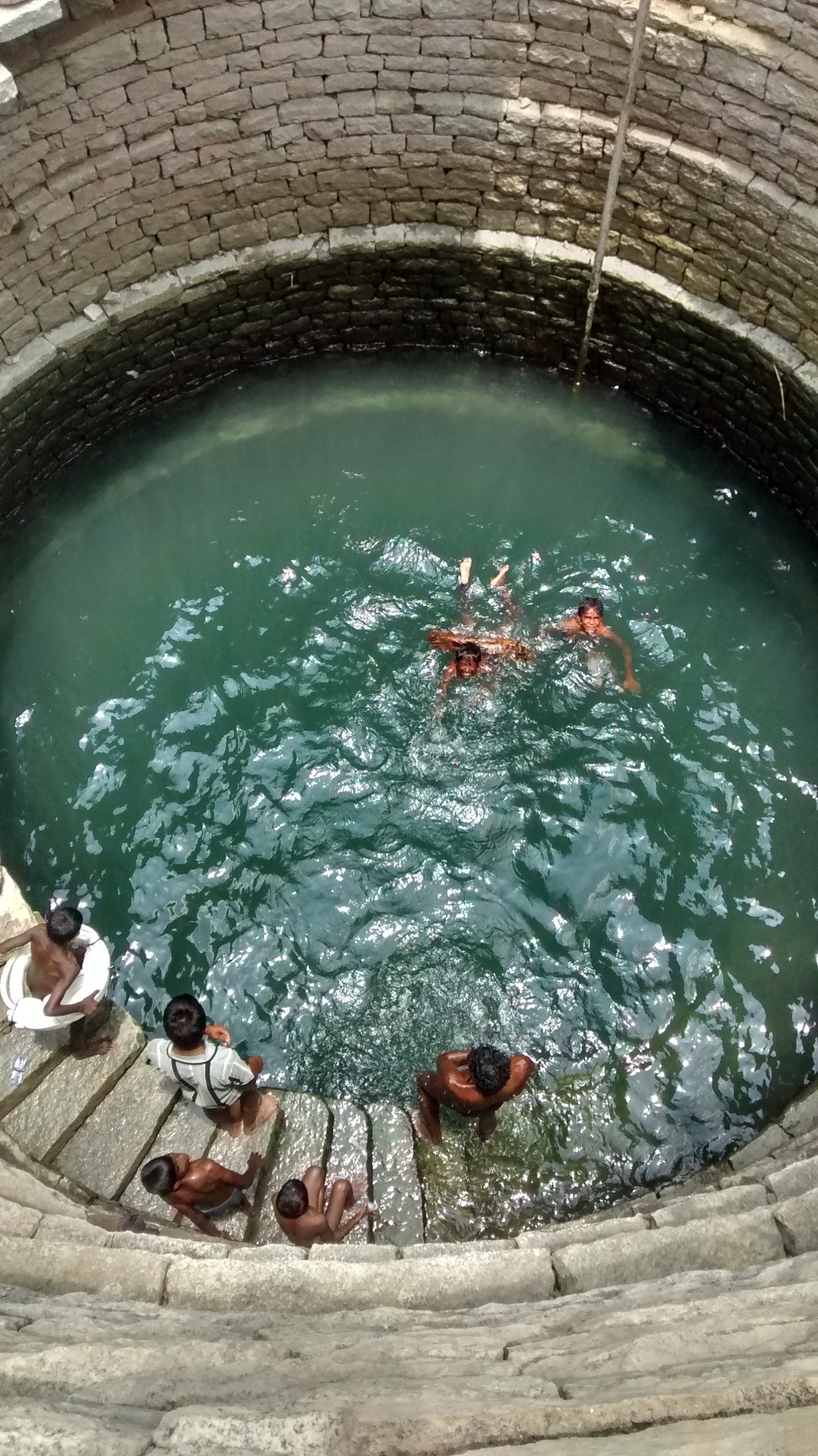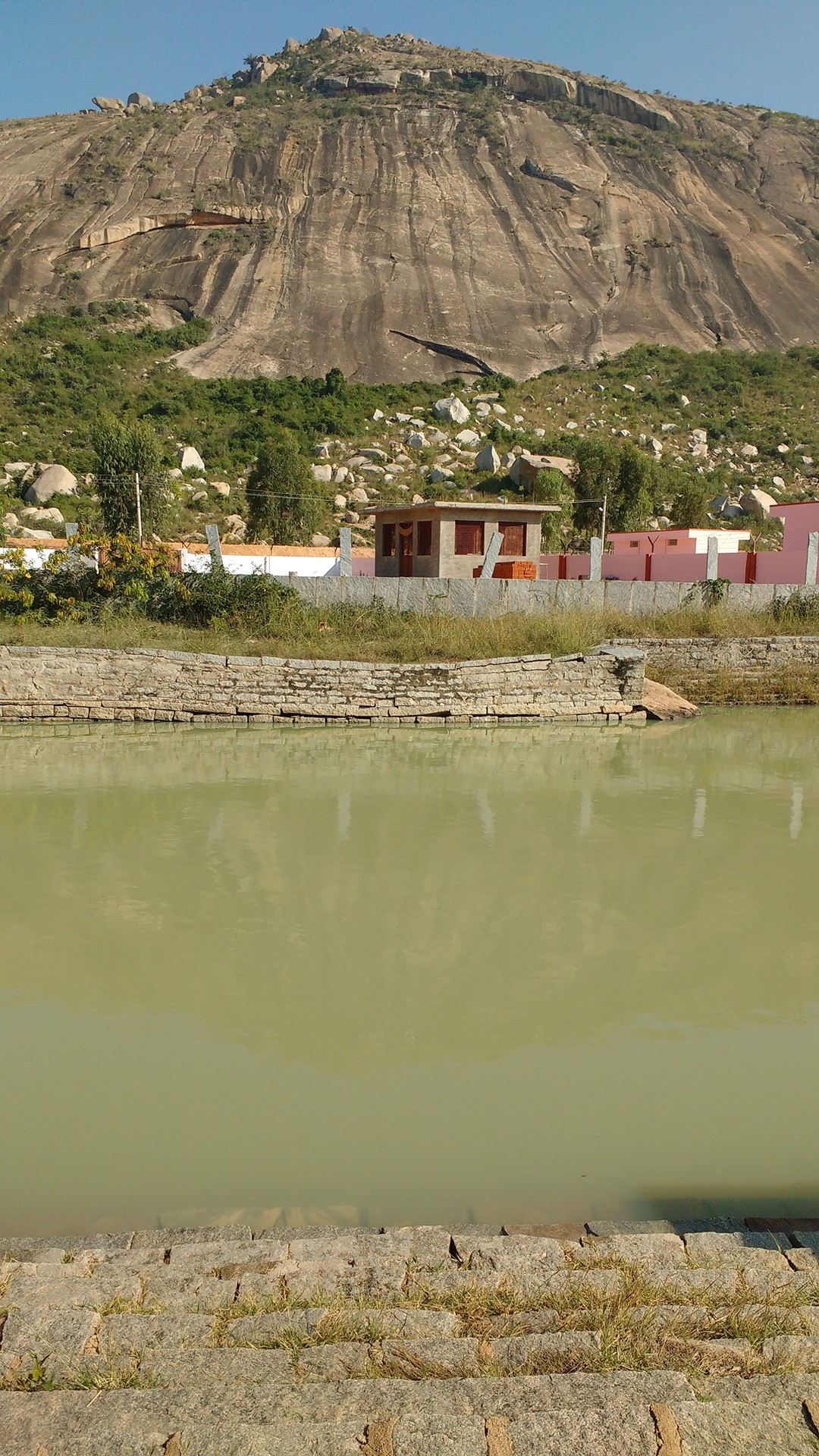The history of open wells dates back to the Harappan civilisation. Wells are perhaps man’s first efforts to access water. Before that he depended on natural rivers, springs and lakes. In India, over centuries, open wells have played a major role in conservation and optimum usage of water during times of water-shortage. Apart from their obvious practical value, some of them are crafted exquisitely enough to be called works of art. In fact, an open well in Sarnath, Uttar Pradesh, dated over 2,300 years ago, still has water. And beautiful, ancient open wells lined with brickwork exist in Dholavira, Gujarat, to this day.
There are very few areas in South India where these wells still contain water. Devarayasamudra, a gram panchayat 90km away from Bengaluru in Karnataka, is one of them.
This rock massif is visible from Kolar (13km away). The huge lava extrusion is situated off the Old Madras Road (the most popular route between Tirupati and Bengaluru), close to Mulbagal town. If you have the time to swing off the road and travel about 4km inwards, you will see this open well.
This open well is considered the swimming pool of Devarayasamudra. Beginners have a piece of log tied to them and then thrash about under the not-so-benign guidance of more experienced swimmers. Tough love, but apparently effective. It is sad that the old pastime of rural swimming - the simple pleasure of a summer well spent - has also disappeared with the falling groundwater table in India. An immeasurable social and cultural loss.
To the west of the afore-mentioned rock massif is a beautiful stepwell that has been fenced and its water is used solely for drinking. Cattle, sheep, goats and washing of clothes are not allowed here. Young lads on their bicycles are a common sight - they bring pots to fill water and take back home.
To the east of the massif is the village of Avani, once the capital of the Ganga Chalukyas. The famous 11th century Ramalingeshwara temple is situated here. The old well in the courtyard, built in the north eastern direction of the deity as per tradition, continues to provide water for the pooja the way it has for the last thousand years.
Doddahonasettihalli is part of the Devarayasamudra gram panchayat. This place is worthy of being declared a groundwater heritage zone to protect its catchment and wells. The local boys pass the time of day at the open well here. They sit on the edge of the well with their home-made fishing tackles to catch minnows (the bigger ones will become dinner). The well is fringed with coconut palms and is rather unique in shape, perhaps due to rocks found while digging. An old water-lifting structure called the yeta lies abandoned. Between the granite pillars that would have supported the wooden lever and acted as a fulcrum grows a neem tree. Nature reclaims what man abandons.
The culture of the well is over 5000-years-old in India. In the wells of Devarayasamudra, we see a microcosm of the past to the present. We would do well to understand and preserve this groundwater heritage.







